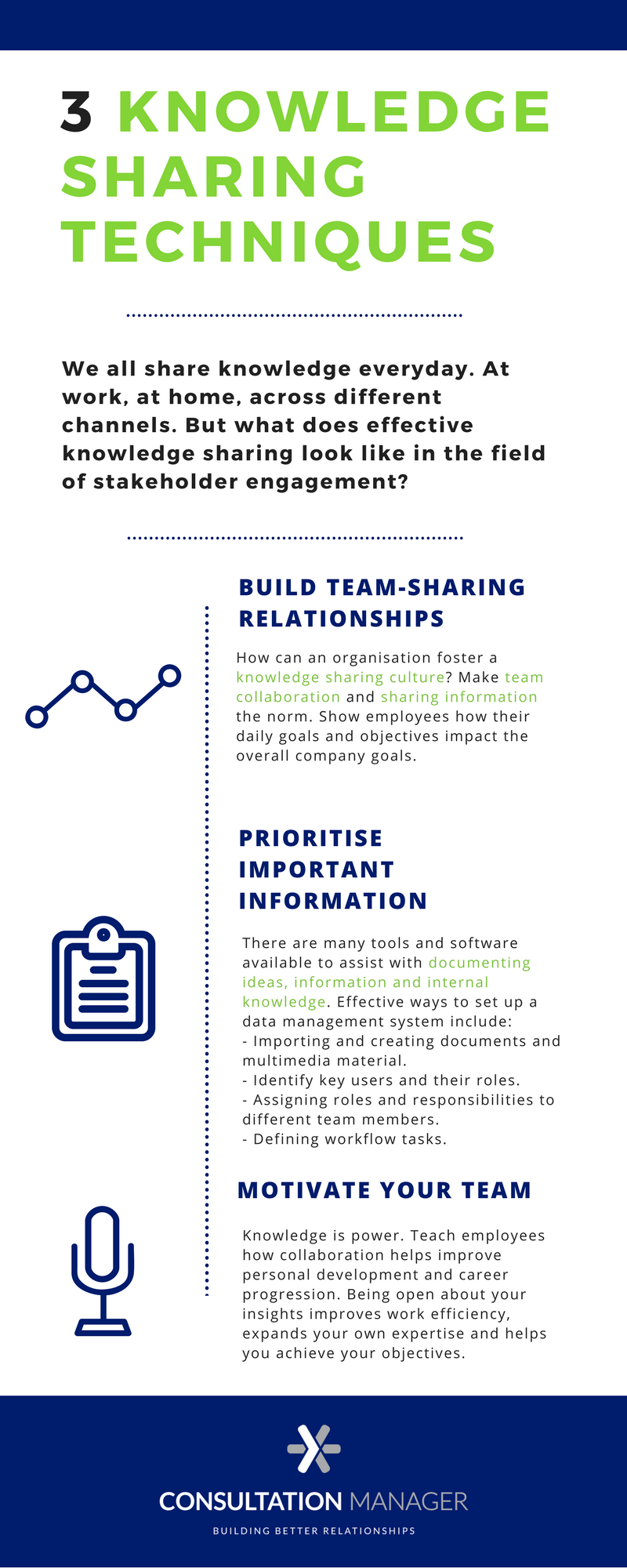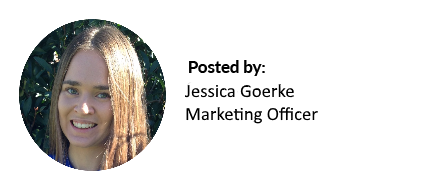We all share knowledge every day. At work, at home, across different channels. But what does effective team knowledge sharing look like in the field of stakeholder engagement?
A common problem we are often asked to solve is increasing transparency across teams. But what is the underlying issue we are actually trying to solve here? A scenario might help paint a picture…
Jane sits in a comms team, she goes on leave and Andrew picks up her role. Jane’s work files are disorganised which makes it difficult for Andrew to continue the work. After an hour, Andrew sorts out the relevant information, but by now he has lost a good portion of his working day. Particularly when your organisation regularly works to a tight timeframe, data transparency makes it easier for other staff to pick up work where someone else left off.
What is knowledge sharing?
“A fundamental part in knowledge management is to spread and make knowledge accessible and usable within or between chosen organisations,” is a definition given by Ken Grant and John Dumay in the Journal, “Leading Issues in Knowledge Management, Volume Two.” Team knowledge sharing involves communicating thoughts, ideas, job or processes to another person or team. This can be done either implicitly or explicitly. Implicit sharing of knowledge involves transferring knowledge from one employees mind to another i.e. via conversation. Whereas explicit knowledge involves physically documenting information, writing down practices or procedures.
How to get the most out of internal knowledge transparency
Build team knowledge sharing relationships:
What does it mean to create and foster a knowledge sharing culture? It involves making team collaboration and transferring information the norm. As a team, everyone strives to reach the same overall goals. Therefore, team-building helps the business meet its objectives – such as cost efficiency, timeliness and data transparency.
Prioritise the most important information:
There are many tools and software available to assist with documenting ideas, information, and internal knowledge. Alan Frost’s Knowledge Management Tools article outlines effective ways to set-up a data management system:
- Import and create documents and multimedia material.
- Identify key users and their roles.
- Assign roles and responsibilities to different team members.
- Define workflow tasks. For example, a Comms team members receive a notification when a new article is ready for review.
The most effective businesses have transparent data to accommodate the efficiency of everyday processes. For more ideas about information sharing, read about our Enterprise Integration Feature.
Motivate your team to share their expertise:
The real question is, “Why should your employees transfer knowledge across the business?” Knowledge is power. Teach employees why team knowledge sharing will help make their job easier and the workplace more efficient. Collaboration helps improve personal development and career progression. Let’s go back to the original example. If Jane communicated her work process to Andrew before she left, then Andrew wouldn’t have spent an hour searching for the relevant information. Being open about your insights and data improves work efficiency, expands your own expertise and helps you achieve your objectives.
Embrace knowledge sharing
Teach employees the importance of knowledge sharing and how it can improve their work performance. Every effective organisation shares knowledge: during training, meetings, brainstorming activities, when researching a topic and communicating their operational activities. Create a plan to maintain data transparency in your business.


Want to see more? Before you leave, subscribe to our newsletter.

